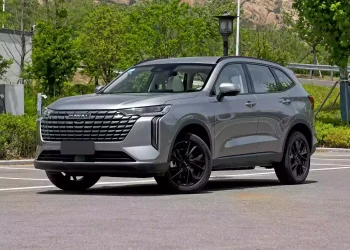The introduction to South Africa’s new vehicle licensing system has been postponed to 2026 due to technical, legal, and administrative challenges. Here’s what you need to know:
- Key Changes Coming in 2026:
- Digital licenses replacing paper cards.
- Licenses valid for 8 years instead of 5.
- Biometric security features (fingerprints, photos).
- Online booking and drive-through renewal options.
- Enhanced data security to prevent identity theft.
- Why the Delay?:
- Outdated equipment causing backlogs.
- Procurement issues and legal disputes over tender processes.
- High court intervention and ongoing investigations.
- Current Rules Still Apply:
- Renew licenses on time to avoid fines.
- Required documents: ID, old license, proof of address, and an eye test report.
- Renewal fees range from $195 to $285 (R260 to R380).
Stay informed through official channels like the South African Government website and the NaTIS portal. The system remains operational, so complete renewals early to avoid penalties.
[TOP STORY] Transport Department clears confusion over new car licence rules
What the New Vehicle License Rules Include
The upcoming changes to the vehicle licensing system aim to address long-standing issues like delays, security loopholes, and inefficiencies. Here’s a breakdown of the major updates that are set to transform the process.
Planned Changes and New Requirements
The revamped system will introduce biometric security features to tackle counterfeit licenses. Each digital license card will come with an embedded chip that stores biometric data, enhancing security measures.
License validity will also see an upgrade, extending from five years to eight years, which will reduce the frequency of renewals and lighten administrative workloads.
Another big change is the shift to digital scheduling. Traditional walk-ins will be replaced by online booking options and drive-through renewals, significantly cutting down waiting times and allowing for in-vehicle processing.
Testing procedures are also getting a modern overhaul. Digital testing systems will streamline the process, delivering faster and more accurate results. These systems aim to reduce human involvement, which not only speeds up renewals but also helps curb corruption in learner testing.
Finally, enhanced data security measures will safeguard driver information with encrypted digital storage. This addresses concerns about identity theft and unauthorized access, ensuring greater peace of mind for users.
Why the Rules Were Delayed to 2026
The rollout of South Africa’s new vehicle license rules has been postponed to 2026 due to a mix of technical issues, procurement problems, and legal disputes, all of which have significantly slowed progress.
System and Administrative Issues
South Africa relies on a single, 20-year-old card machine for producing driver’s licenses. This outdated equipment has repeatedly broken down, leading to a backlog of around 380,000 license renewals as of September.
Initially, the government aimed to decommission this old system and transition to new smart cards by April 2024. However, this plan faltered due to challenges with service providers. The Driving Licence Card Account (DLCA) had allocated R486 million for the upgrade, but all bids exceeded the budget, and the preferred bidder failed to meet critical technical requirements. Other bidders also faced disqualifications, leaving the project in limbo.
Legal Challenges and Public Concerns
Legal disputes and public scrutiny have further delayed progress. Transport Minister Barbara Creecy initiated legal action to halt the tender process after the auditor-general flagged noncompliance with procurement regulations. The matter is now awaiting a declaratory order from the high court to determine the next steps, adding more delays.
Civil society organizations, including the Organisation Undoing Tax Abuse (Outa) and the AA, raised concerns about the tender process. These groups prompted the minister to request an investigation by the auditor-general. With these complications, officials have announced plans for temporary measures to address the situation.
Government’s Response and Next Steps
Despite the setbacks, officials are working on interim solutions. Transport department spokesperson Collen Msibi stated:
"While the high court deliberates on the smart licenses, the government is exploring interim solutions to sustain the operations of the current machine. The interim measures would be announced in due course".
The introduction of digital driving licenses (eDLs), originally planned for March 2025, has also been delayed. Wayne Duvenage, CEO of Outa, commented:
"Outa is grateful the minister listened and took the matter further, as we believe there is clear evidence of wrongdoing and this is outlined in the Outa dossier provided to the minister in September last year".
With these ongoing technical, legal, and administrative hurdles, it’s now clear that drivers won’t experience the anticipated updates until sometime in 2026.
How to Follow Current License Rules
With the updated vehicle license rules postponed until 2026, it’s crucial for drivers to stick to the current regulations to avoid fines or legal trouble. The existing system remains active, so knowing the steps and requirements can save you both time and money.
Current License Process and What You Need
Renewing your driving license card involves specific steps and documents. You can complete the process either online via the NaTIS website or in person at a Driving License Testing Centre (DLTC). Keep in mind, it takes about four to six weeks to receive your new card after applying.
Here’s what you’ll need to get started:
- Identity Document (ID): Bring your ID along with a copy.
- Old License Card or Passport: Either your current driving license card or a valid South African passport is required.
- Photographs: Four black-and-white ID photos are typically needed, but check with your DLTC for exact requirements.
- Proof of Address: A utility bill in your name will work. If the bill isn’t in your name, provide an affidavit from the property owner and their utility bill. For those living in informal settlements, a stamped letter from your ward councillor confirming your address will suffice.
Additionally, you’ll need to fill out two forms: the DL1 (Application for Renewal of Driving License Card) and the Notification of Change of Address or Particulars (NCP) form. An eye test is mandatory and can be done at the DLTC or by an optometrist, with the results submitted to the testing center. Fingerprints will also be scanned as part of the updated process.
Fines and Penalties for Breaking Rules
Driving with an expired license can get expensive. Fines for noncompliance have increased, so renewing on time is essential. If your license expires, you’ll also need to pay for a temporary driving license in addition to the renewal fee. Since 2025, expired licenses can no longer be extended by simply visiting an office. Renewal fees range from $195 to $285 (R260 to R380), depending on your province. Missing the renewal deadline will add extra costs due to the temporary license requirement.
How to Stay on Top of License Renewals
To avoid any issues, start your renewal process at least four weeks before your license expires. Use this time to gather your documents and schedule your renewal appointment.
In September 2025, Cape Town introduced a drive-through renewal facility, allowing drivers to complete the process in under five minutes without leaving their cars. While this service isn’t available everywhere, it reflects ongoing efforts to simplify the process.
For the latest information on fees, processing times, and specific requirements in your area, reach out to your local licensing office. The NaTIS portal is also a helpful tool to initiate the renewal process, though you’ll still need to visit a DLTC for biometric data collection.
By following these steps, you’ll stay compliant and avoid unnecessary hassles until the new rules take effect in 2026.
| Renewal Requirements | Details |
|---|---|
| Timeline | Start 4 weeks before expiry |
| Validity Period | 8 years (up from 5) |
| Processing Time | 4-6 weeks for card collection |
| Fee Range | $195-$285 (R260-R380) |
sbb-itb-09752ea
Getting Ready for the 2026 Changes
It’s never too early to start preparing for the upcoming 2026 vehicle license changes. Taking proactive steps now can make the transition much smoother when the updated regulations take effect.
What the Changes Could Mean for Drivers
While the specifics are still being worked out, the new vehicle license rules are expected to bring updates in areas like inspection procedures, digital processing, and security protocols. Since the exact requirements haven’t been finalized yet, it’s important for drivers to stay tuned to official announcements for the most accurate and up-to-date information.
Steps Drivers Can Take Now
Here’s how you can get ahead of the curve:
- Organize your vehicle records: Keep your registration, insurance, and service history documents in order. Having these ready will save you time later.
- Stay on top of maintenance: Regular maintenance and detailed records might be crucial if new requirements are introduced.
- Get familiar with digital platforms: Start exploring official online vehicle licensing systems. Learning how to navigate these now will make future adjustments easier.
- Build a relationship with a trusted mechanic: If new inspection protocols are introduced, having someone reliable to guide you will be invaluable.
- Follow reliable sources: Keep up with updates from trusted outlets like ImotoNews South Africa and official government channels for accurate information.
By tackling these steps now, you’ll be better prepared to adapt to whatever changes come your way.
Comparing Current and Future Rules
The current system for vehicle licensing remains in place for now, but the 2026 updates are likely to bring shifts in documentation and inspection processes. While the exact details are still under wraps, it’s clear that some adjustments will be made. Keep an eye on official communications for the finalized rules once they’re announced.
Where to Get Official Information and Updates
As South Africa gears up for the 2026 license changes, it’s more important than ever to know where to find accurate and up-to-date information. Staying informed through official sources ensures you’re prepared for the transition and aware of the latest developments in the licensing process.
Best Sources for License Information
- The South African Government website (gov.za) is your primary stop for official updates on driving license renewals and regulatory changes. This is where policy announcements are published first.
- For online renewals and bookings, the eNaTIS online booking portal (online.natis.gov.za) is the platform to use. It streamlines the process for license-related tasks.
- Your local Driving License Testing Centers (DLTCs) are invaluable for in-person assistance. These centers operate under municipal supervision and follow national Department of Transport guidelines, ensuring they have the most current information on requirements and upcoming changes.
- The Department of Transport, both at the national and provincial levels, is responsible for announcing new rules and policies. Keeping an eye on their official communications ensures you’re getting information straight from the source.
- Local municipalities or licensing offices are essential for region-specific details, such as procedures and fees. These fees can vary depending on the province.
Some provinces are already testing new licensing solutions as part of the modernization push leading up to 2026, signaling a shift toward a more efficient system.
ImotoNews South Africa is also keeping tabs on these developments, offering regular updates to help drivers navigate the changes with ease.
Official Advice for Drivers
Authorities strongly recommend renewing your license on time, even as the new rules are finalized. To avoid penalties or additional costs, renew at least one month before your license expires using the eNaTIS website. Always confirm details through official channels . If you’re unsure, contact your nearest DLTC or local municipality for clarification.
The current licensing system remains fully operational, so there’s no reason to postpone renewals or other license-related tasks while waiting for the 2026 updates. This advice aligns with earlier guidance on renewal procedures, ensuring drivers remain compliant and prepared for the upcoming changes.
| Official Source | Primary Use | Contact Method |
|---|---|---|
| South African Government Website (gov.za) | Policy announcements and general information | Online portal |
| eNaTIS Portal (online.natis.gov.za) | Online applications, test bookings, and renewals | Online platform |
| Local DLTCs | In-person support | In person |
| Department of Transport | Regulatory updates and new rules | Official communications |
| Municipal Licensing Offices | Region-specific cost details and administrative procedures | Phone or in person |
Key Points for Drivers to Remember
Even with the 2026 delay, it’s important to stay on top of current regulations. Your existing driver’s license requirements remain unchanged, so make sure to handle renewals and any other license-related tasks without delay.
To renew your license, head to the official NaTIS portal: https://online.natis.gov.za/#/. It’s worth noting that in May 2025, the Western Cape introduced a digital testing trial in Beaufort West. Keep an eye out for updates as more information becomes available.
For the latest news, check gov.za, the NaTIS portal, or reach out to your local Driving License Testing Centre. Also, stay tuned for announcements from the Transport Ministry for any additional updates.
FAQs
What advantages does the new digital vehicle licensing system offer over the current paper-based system?
The digital vehicle licensing system is built to simplify and speed up the entire process, offering a more convenient and secure alternative to the old paper-based method. By transitioning to an online platform, drivers can enjoy smoother renewals, less paperwork, and a lower chance of errors that often come with manual handling.
On top of that, the system makes licensing tasks more accessible by enabling motorists to complete them online, cutting out the need for trips to physical offices. This change not only saves time but also boosts transparency and reduces the chances of documents being lost or damaged.
How will biometric security features in digital driver’s licenses affect driver safety and data privacy?
The integration of biometric security features, such as fingerprints, into digital driver’s licenses aims to bolster the protection of personal information. These unique identifiers create a robust barrier, making it far more challenging for criminals to counterfeit licenses or gain access to private data.
At the same time, there’s a strong emphasis on safeguarding drivers’ privacy. Biometric data will be stored securely and used exclusively for verification, adhering strictly to data protection laws to ensure privacy remains a top priority.
What steps is the government taking to address the backlog and outdated licensing equipment until the new rules are implemented in 2026?
The government is aware of the issues caused by outdated licensing equipment and the growing backlog. While they haven’t laid out all the details of their short-term solutions, officials have stressed their dedication to keeping current licensing systems running and resolving technical problems as they arise. Drivers should keep an eye on official updates and make sure their licenses stay valid under the current rules. If you’re uncertain about your status, it’s a good idea to contact your local licensing office for assistance.
Related Blog Posts
- How to Register an Imported Vehicle in South Africa (Step-by-Step)
- How to Transfer Car Ownership in South Africa: A Complete 2025 Guide
- Car Ownership Transfer in SA: Step-by-Step Process & Fees in 2025
- 6 Documents You Need to Register a Car in South Africa





